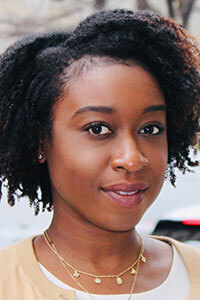We identify prospects, build a database, and create a campaign to reach the audiences that we’ve come to know over many years of producing events.
And that could be a problem. In our familiarity with our own stakeholders, we are likely overlooking important segments of our current and prospective audiences. Marissa Thompson, account director at mdg, shares how to broaden your approach to appeal to more diverse groups.
Make It About Them

Marissa Thompson
The first step is to help people of all kinds visualize themselves at your event. We are more likely to identify with someone who looks like us, sounds like us — and understands our needs. Let’s say you’re a 28-year-old Hispanic woman who works in finance for a regional furniture company in southern Texas who has budgeted to attend one conference. There are two industry conferences that are well-respected and feature timely information and networking opportunities. As you review their websites, however, you see that one has female keynoters, networking opportunities with mentor-mentee matchmaking, and sessions that discuss financing in underserved areas. You’re immediately drawn to this conference. You expect that you’ll be inspired by speakers who are accomplished women, and as a young professional seeking professional guidance, you’re intrigued by the mentor matchmaking. Plus, there are sessions that directly address the daily challenges you face with the community you serve. It’s clear which event resonates with you.
Developing a true understanding of an audience and its micro-segments and cultural nuances takes time and market research. Begin with basic demographics about race/nationality, gender identity, and age, and include other dimensions like socioeconomic and cultural backgrounds.
Next, consider developing personas — representations of different segments of your target audience — to understand the fundamental motivations and concerns of potential segments. Be mindful of incorporating respondents from a range of backgrounds. Facilitate focus groups with attendees who feel underrepresented at your event as well as with non-attendees.
Using inclusive images in marketing collateral is an obvious way to demonstrate diversity, but subtle cues in attitudes, values, and culture factor into the equation. Consider publishing Q&A’s in your marketing communications from a diverse group of registrants to provide a better sense of the character of different segments.
Diversity is about having many voices, and inclusion is about celebrating that and creating a community where everyone learns from each other. By highlighting these values and ideals, potential attendees will see themselves reflected in your marketing and ultimately at your event.
It Starts From Within
There is no quick fix or single solution to diversity and inclusion at events. It starts with looking around the table and welcoming enlightening internal conversations about age, race, religion, culture, gender identity, and everything in between. It also means increased representation of the audience you’re trying to reach on your executive boards, your speaker slate, and those involved in the event’s design and content.
It’s almost impossible to create authentic content that appeals to an audience without a voice that represents them. Taking the initiative to seek diversity in the people you employ and the agencies you hire will put you on the right track to widen your perspective and help paint a better picture of what your potential attendees need.
Kimberly Hardcastle-Geddes is owner and president at mdg, a full-service marketing and public relations firm specializing in B2B events. Marissa Thompson is an account director at mdg who previously worked in event marketing at the National Automobile Dealers Association.

